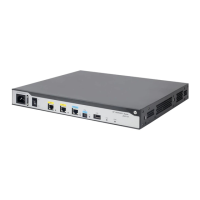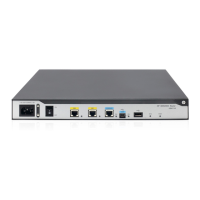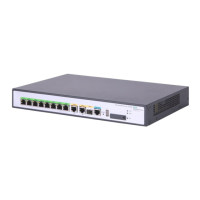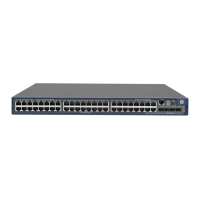358
The LAN delay defines the IPv6 PIM message propagation delay. The override interval defines
a time period for a downstream router to override a prune message. If the propagation delay or
override interval on different IPv6 PIM routers on a shared-media LAN are different, the largest
ones apply.
On the shared-media LAN, the propagation delay and override interval are used as follows:
If a router receives a prune message on its upstream interface, it means that there are
downstream routers on the shared-media LAN. If this router still needs to receive multicast
data, it must send a join message to override the prune message within the override
interval.
When a router receives a prune message from its downstream interface, it does not
immediately prune this interface. Instead, it starts a timer (the propagation delay plus the
override interval). If interface receives a join message before the timer expires, the router
does not prune the interface. Otherwise, the router prunes the interface.
If you enable neighbor tracking on an upstream router, this router can track the states of the
downstream nodes for which the joined state holdtime timer has not expired. If you want to
enable neighbor tracking, you must enable it on all IPv6 PIM routers on a shared-media LAN.
Otherwise, the upstream router cannot track join messages from every downstream routers.
Generation ID—A router generates a generation ID for hello messages when an interface is
enabled with IPv6 PIM. The generation ID is a random value, but only changes when the status
of the router changes. If an IPv6 PIM router finds that the generation ID in a hello message from
the upstream router has changed, it considers that the status of the upstream router has
changed. In this case, it sends a join message to the upstream router for status update. You can
configure an interface to drop hello messages without the generation ID options to promptly
know the status of an upstream router.
You can configure hello message options for all interfaces in IPv6 PIM view or for the current
interface in interface view. The configuration made in interface view takes priority over the
configurations made in IPv6 PIM view.
Configuring hello message options globally
1. Enter system view.
system-view
N/A
2. Enter IPv6 PIM view.
ipv6 pim
[
vpn-instance
vpn-instance-name ]
N/A
3. Set the DR priority.
hello-option dr-priority
priority
The default setting is 1.
4. Set the neighbor lifetime.
hello-option holdtime
time
The default setting
seconds.
5.
Set the IPv6 PIM message
propagation delay for a
shared-media LAN.
hello-option lan-delay
delay
The default setting
milliseconds.
6. Set the override interval.
hello-option override-interval
interval
The default setting is 2500
milliseconds.
7. Enable neighbor tracking.
hello-option neighbor-tracking
By default, neighbor tracking is
disabled.
Configuring hello message options on an interface
1. Enter system view.
system-view
N/A
2. Enter interface view.
interface
interface-type
interface-number
N/A
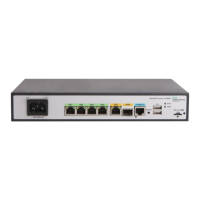
